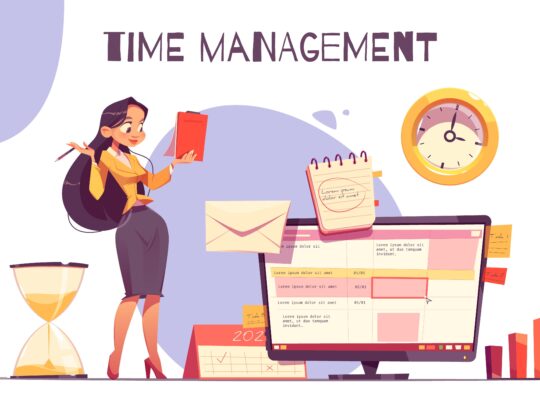| Getting Things Done | ||
| Instructor: David Allen | ||
| Released: 10/12/2018 | Course Details 30m General | |
| Skills Covered Performance Management Time Management | Course Link | |
| Professional Certifications and Continuing Education Units (CEUs) N/A | ||
| Join world-renowned productivity and time management expert David Allen as he walks you through his five-step process for Getting Things Done®. He shows you how to stay on top of your work and avoid feeling buried by it, while carving out space in your life to do more meaningful things. Learn how to capture, clarify, organize, reflect, and engage with tasks that are demanding your attention, and come away with a clear head and a clear focus. Getting Things Done® is a registered trademark of the David Allen Company. Source: LinkedIN Learning | ||
Getting Things Done
Overview of Getting Things Done
- Capture – collect what has your attention
- Clarify – process what it means
- Organize – put it where it belongs
- Reflect – review frequently
- Engage – do what needs to be done
Capturing Things
Collecting what has your attention. Look at your workspace. What doesn’t belong here?
Open Loop
Something that is not complete.
Mind Sweep
Removing things from your mind that have your attention.
Find a trusted place to store what you capture. Your mind is for having ideas, not for holding them.
Capture Tools
- Pen and paper
- Voicemail
- Whiteboard
Clarifying meaning
Clarify
Process what it means.
When picking up an item from the in-basket, ask yourself, is it “actionable?” Do you need to do something about it?
If NO, then you have three categories for your next step:
- Trash – throw it away if you don’t need it
- Incubate – hold onto it for a specific period of time to determine further action
- Reference – file away the information
If YES, then you have two key questions:
- What is the next action? Very specific, granular next step
- What is the project/project plan?
Project
An outcome resulting from actions.
Do, delegate, defer
Once you decide on the next action, you have three possible actions: Do, Delegate or Defer.
The famous 2 minute rule – will it take less than 2 minutes? Yes or No. If so, do it right now!
If it takes longer than 2 minutes – can it be delegated? If you can’t delegate, then defer it. You will need to schedule time to complete the task or schedule the next action.
Organizing where things belong
Organizing
Deciding where things go.
When deciding to “defer” an action you need to determine if it should be scheduled on your calendar to spend the required time dedicated to completing the task OR if it should be added on your “Next Actions” list. Your “next action” list can be completed in between your calendar items.
Reflecting on your tasks
Reflect
Review frequently
Review your calendar frequently as well as your “Next Action” list.
Weekly Review
- Reflect on your projects.
- Look forwards and backwards
- Schedule time at the end of every week
Engaging the tasks
Engage
Focus on the moment
Engagement
Where you are putting your focus and attention.
The Getting Things Done® process helps you make intuitive decisions based on priorities.
Implications of Getting Things Done
What makes Getting Things Done different?
Getting Things Done® has people start where they are, not where they should be. When people get a sense of how to execute, they automatically focus on the bigger game. The GTD® process helps you put your focus on execution. When you learn to get control of your life, you can do it for the rest of your life.
Pay attention to what has your attention…
How long does it take to implement?
The biggest barrier to entry with GTD® is people’s addition to stress. GTD® can be implemented over time. The Power of Habit by Charles Duhigg is highly recommended.
How do I stick with it?
If you stopped Getting Things Done® don’t give up. Start again!
Get Back on Track
- Sit down
- Empty your head
- Make next-action decisions
How to scale Getting Things Done
You can’t teach an organization Getting Things Done®. You can teach the individuals, but the whole culture can support GTD® behaviors.
Every conversation should include what is to be accomplished, and by what time– and someone should track those agreements.
| Remember! To experience the full benefit of this guide, I highly recommend you watch the full training session. |






